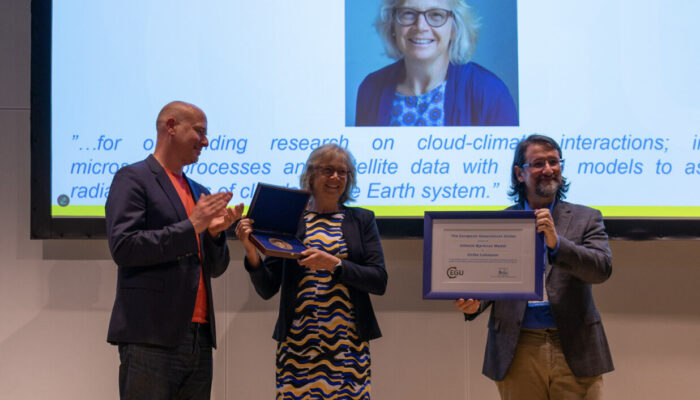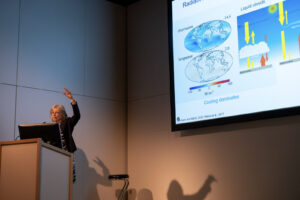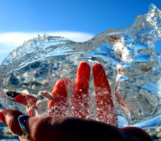
Prof. Dr. Ulrike Lohmann is a leading atmospheric physicist and climate scientist at ETH Zurich’s Institute for Atmospheric and Climate Science, renowned for her pioneering work on clouds, aerosols, and their interactions within the Earth’s climate system. Her research has significantly advanced our understanding of how microscopic particles influence cloud formation and, in turn, the global energy balance—a critical factor in climate modeling and prediction.
This year, Prof. Lohmann was honored with the prestigious Vilhelm Bjerknes Medal from the European Geosciences Union (EGU), recognizing her outstanding scientific contributions and leadership in the field of atmospheric sciences. Her work not only bridges fundamental research and practical climate modeling, but also informs policy discussions on climate mitigation and adaptation.
Today, we’re delighted to speak with Prof. Lohmann about her research, the evolving role of clouds in climate science, and what lies ahead for the next generation of atmospheric researchers.
I love to use my brain. There’s always a new problem to solve — something in nature that doesn’t quite make sense yet. That’s what keeps me going.
“I didn’t grow up knowing I wanted to be a scientist,” Lohmann admits. “It was really trial and error.” After high school, she spent a voluntary social year in Africa, working with children. “It was meaningful, but I realized it wouldn’t fulfill me for a lifetime. I needed something more analytical — something that challenged my brain.”
She tried different university subjects before setteling for meteorology; “intellectually challenging and relevant for society. Understanding the atmosphere, the weather, and how it connects to people’s lives — turned out to be the perfect mix.”
That balance between rigorous physics and societal relevance still drives her work today.
Why Clouds?
Clouds, to Lohmann, are far more than picturesque sky formations. They’re crucial players in the Earth’s climate — reflecting sunlight, driving precipitation, and regulating temperature. “You really can’t get around them,” she laughs. “Even low- and high-pressure systems are defined by clouds. They’re everywhere — and they affect everything.”
Her fascination isn’t just theoretical. “When you lie on the beach and look up, you can already learn a lot,” she says. “How they form, how they move — clouds tell us stories about what’s happening in the atmosphere.”
Lohmann’s favorite clouds are the towering cumulonimbus — the thunderstorm clouds that rise like skyscrapers into the sky. “They’re spectacular,” she says. “Watching one grow in the distance is fascinating — but I prefer not to be directly underneath!”
The Aerosol Connection
Much of Lohmann’s work focuses on how aerosols — tiny particles like dust, soot, or sea salt — interact with clouds. “Without aerosols, we wouldn’t have clouds as we know them,” she explains. “They act as seeds for cloud droplets and ice crystals. Without them, the atmosphere would need to be absurdly humid before droplets could form — something like 500% relative humidity!”
Aerosols also influence climate directly. Some, like soot, absorb sunlight and warm the air. Others, such as sulphates or sea salt, reflect sunlight and have a cooling effect. “It’s a double-edged sword,” Lohmann says. “Aerosols are bad for our health, but they also offset some of the warming caused by greenhouse gases. As we clean the air for our health, we unintentionally make global warming stronger.”
It’s a striking example of how interconnected — and complex — our planet’s systems are.
Inside the CLOUDLAB, a natural cloud laboratory
One of Lohmann’s favorite recent projects is based in her home: Switzerland.
“Switzerland gives us the perfect natural laboratory,” she says. “In winter, we get long-lasting layers of stratus clouds — those gray blankets that can make Zurich feel gloomy for weeks.” Perfect for scientists, though. “They’re stable, persistent, and ideal for studying how ice crystals form.”
Her team used these clouds to explore how injecting aerosol particles, which ice formation, changes the structure and behavior of clouds. “We could actually watch how the ice crystals grew and evolved,” she says. “It was a unique way to see cloud physics in action.”
Even after decades of research, her curiosity hasn’t waned. “Every project feels like uncovering another piece of a giant puzzle”, she says.
 Vilhelm Bjerknes Medal Lecutre by Ulrike Lohmann (29 April 2025). Photos taken by Romanos Foskinis.
Vilhelm Bjerknes Medal Lecutre by Ulrike Lohmann (29 April 2025). Photos taken by Romanos Foskinis.
Challenges in a Warming World
Looking ahead, Lohmann sees major scientific challenges and exciting opportunities in how we model the atmosphere.
“Our climate and weather models have improved enormously,” she says, “but clouds are still one of the biggest uncertainties.” Increasing model resolution (making the digital grid boxes smaller) helps capture details like mountain flow and convective storms, but it’s also computationally expensive.
“And then,” she adds, “there’s machine learning.”
She points to a recent case where a neural network predicted the track of a hurricane more accurately than physical models. “That’s both fascinating and a little scary,” she admits. “Do we trust a machine-learning model that we don’t fully understand, or do we stick with physics-based models that might be less accurate but are grounded in theory? It’s an ethical and scientific challenge.”
Advice for Future Scientists
When asked what advice she’d give to young people interested in atmospheric or climate science, Lohmann doesn’t hesitate. “Be curious,” she says. “Curiosity is the real driver of science. If you’re eager to learn, it doesn’t feel like work — even if you’re reading an IPCC report on vacation!”
She also emphasizes flexibility. “I didn’t plan to study clouds,” she laughs. “My original supervisor left, and I needed a new project. I said, ‘Okay, let’s try clouds.’ And look where it took me!”
Equally important, she adds, is finding the right environment. “It’s not just about the topic — it’s about the people and the place. You have to feel comfortable in your group and your surroundings. That’s where you’ll do your best work.”
The Human Side of Climate Science
Despite her deep understanding of atmospheric physics, Lohmann is keenly aware of the human dimension of climate change. “One of the most misunderstood aspects is water vapour,” she says thoughtfully. “People often mix up cause and effect — they hear water vapour is a greenhouse gas and assume it drives climate change. But it’s actually a feedback, not a driver. As the Earth warms, more water evaporates, which amplifies the warming.”
Communicating such nuances to the public remains one of her missions. “It’s crucial that science doesn’t stay in the ivory tower,” she says. “We need to connect — to make people understand not just the data, but the wonder of how our planet works.”
A sky full of Questions
“They clean the air, they regulate the climate, they bring rain — and sometimes they even frustrate us,” she says. “But that’s what makes them so fascinating. Clouds are everywhere. You simply can’t get around them.”
Check ot Ulrike’s medal lecture with the title From the microscale to climate: combining observations, laboratory data, and numerical simulations for aerosol-cloud interactions .

